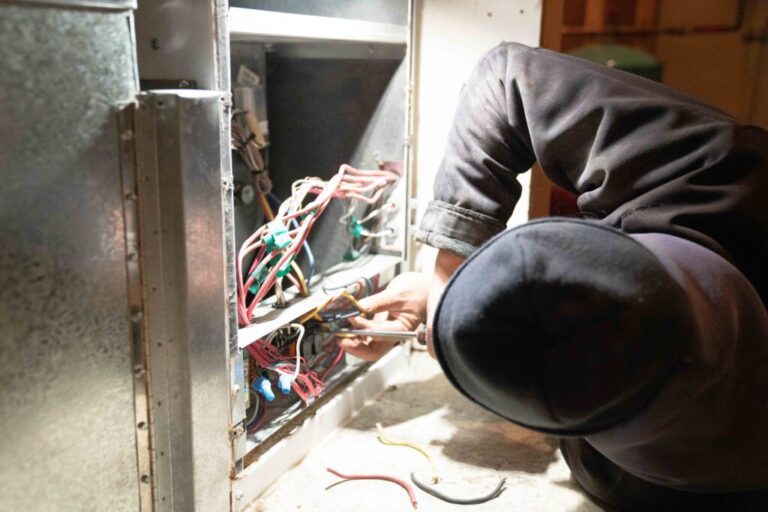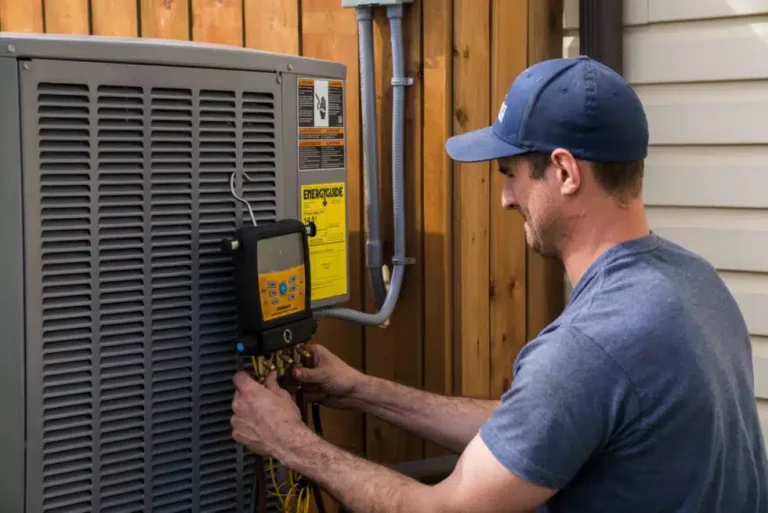Understanding Energy Efficiency in Winter Heating
As the cold grip of winter tightens, homes become sanctuaries of warmth and comfort. However, maintaining that cozy atmosphere efficiently without escalating energy bills is a challenge many homeowners face. Understanding the principles of energy efficiency in winter heating is crucial for achieving this delicate balance.
Firstly, energy efficiency in heating refers to the ability of a system to convert energy into heat effectively, minimizing waste. This not only ensures warmth but also conserves energy, leading to lower utility costs. Efficient heating systems work by optimizing their performance through regular maintenance and adopting energy-saving technologies.
Key Factors Influencing Energy Efficiency
- System Maintenance: Regular check-ups and tune-ups are pivotal. They ensure that components such as furnaces and boilers are functioning optimally, reducing energy consumption. Dirty filters or clogged ducts can significantly impair efficiency, making maintenance a priority.
- Thermostat Management: Smart thermostats play a vital role in energy efficiency. By automating temperature settings based on occupancy and time of day, they reduce unnecessary heating when residents are away or asleep.
- Home Insulation: Proper insulation prevents heat loss, maintaining indoor temperatures with less energy. Sealing leaks around windows and doors is a simple yet effective step towards conserving heat.
In conclusion, understanding and implementing energy-efficient practices in winter heating not only enhances comfort but also contributes to significant savings. By focusing on maintenance, smart technology, and insulation, homeowners can enjoy a warm, energy-efficient home throughout the winter months.
Choosing the Right Heating System for Your Home
When it comes to securing warmth during the frigid winter months, selecting the appropriate heating system for your home is paramount to achieving maximum efficiency and comfort. With numerous options available, each with its own set of benefits and drawbacks, it’s crucial to consider various factors to make an informed decision.
Firstly, evaluate the size of your home. Larger homes may benefit from systems like gas furnaces, which provide robust and consistent heat delivery. Gas furnaces are known for their high efficiency and cost-effectiveness, especially in colder climates where they can maintain a stable temperature without straining your energy budget. On the other hand, smaller or more environmentally conscious households might opt for heat pumps, which offer both heating and cooling functions, thus providing year-round utility and reducing environmental impact.
Another factor to consider is energy efficiency. High-efficiency boilers and furnaces can significantly reduce energy costs over time. These systems are designed to maximize heating output while minimizing energy consumption, a critical aspect in regions with long, harsh winters like Saskatoon. Additionally, advanced systems often come equipped with programmable thermostats, allowing homeowners to tailor heating schedules to their lifestyle, further enhancing energy savings.
Lastly, it’s important to factor in installation and maintenance costs. Some systems may have a higher initial investment but offer savings in the long run through reduced energy bills and fewer repairs. Regular maintenance is essential, regardless of the system choice, to ensure optimal performance and longevity.
Ultimately, the right heating system for your home balances efficiency, comfort, and cost, tailored to your specific environmental conditions and personal preferences.
Regular Maintenance and Its Impact on Efficiency
One of the most effective ways to ensure maximum efficiency of your heating system during the winter months is through regular maintenance. A well-maintained heating system not only operates more efficiently but also offers consistent performance and reliability. When you schedule routine maintenance, you are investing in the longevity and efficiency of your system, which can translate into significant energy savings and reduced utility bills over time.
Regular maintenance involves a comprehensive inspection and cleaning of the system’s critical components. For instance, technicians will clean and replace air filters, which, if dirty or clogged, can restrict airflow and force the system to work harder, thereby consuming more energy. Additionally, they will inspect the thermostat to ensure it is properly calibrated, and check for leaks or obstructions in the ductwork that could impede the system’s efficiency.
Another critical aspect of maintenance is the examination of the heat exchanger for any cracks or wear and tear, which can be a safety hazard. By addressing these issues early, you prevent potential breakdowns and costly repairs that could arise from neglect. Furthermore, a well-tuned heating system provides more even heating throughout your home, eliminating cold spots and enhancing comfort during the chilly months.
Ultimately, regular maintenance is an essential step in maintaining a high-efficiency heating system. By committing to annual tune-ups, homeowners can prolong the life of their heating systems and ensure they operate at peak performance, even during the harshest winter conditions.
Insulating Your Home for Maximum Heat Retention
As temperatures plunge during the winter months, ensuring your home is adequately insulated becomes crucial for both comfort and cost efficiency. Proper insulation serves as a barrier against the cold, reducing the escape of precious heat generated inside your home and keeping the low temperatures at bay outside. This practice not only helps maintain a cozy indoor environment but also significantly lowers your energy bills.
Understanding Heat Loss
Heat loss in homes primarily occurs through the roof, walls, windows, floors, and doors. Addressing these areas can enhance your home’s thermal efficiency:
- Roof Insulation: Since warm air rises, the roof is a major site of heat loss. Ensuring your attic is well-insulated can prevent up to 25% of heat from escaping.
- Wall Insulation: Walls can account for 35% of heat loss. Insulating cavity walls or using solid wall insulation can be effective solutions.
- Window Insulation: Double glazing windows or using thermal curtains can reduce draughts and heat loss.
- Floor Insulation: Insulating underfloor spaces helps prevent heat from escaping into the ground.
- Door Insulation: Weatherstripping around doors can seal gaps and prevent draughts.
Benefits of Proper Insulation
Besides maintaining warmth, effective insulation extends the lifespan of your heating system by reducing its workload. Homes with proper insulation require less energy to heat, which translates into lower energy consumption and reduced utility bills. Moreover, it contributes to a smaller carbon footprint, making it an environmentally friendly choice.
Investing in quality insulation for your home is a strategic move that pays dividends in comfort, cost savings, and environmental impact. By focusing on these key areas, you can ensure that your dwelling remains a bastion of warmth throughout the harsh winter months.
Smart Thermostats and Their Role in Efficient Heating
As winter’s chill creeps in, the quest for efficient heating solutions becomes paramount. One of the most transformative advancements in home heating technology is the smart thermostat. These intuitive devices have revolutionized how homeowners manage their heating systems, offering an array of benefits that extend beyond mere temperature control.
Unlike traditional thermostats, which require manual adjustments, smart thermostats learn your schedule and heating preferences over time. They utilize algorithms and sensors to automatically adjust the temperature, ensuring your home is warm and comfortable when you need it, and conserving energy when you don’t. This adaptive technology not only enhances convenience but plays a crucial role in reducing energy consumption.
Moreover, smart thermostats can be controlled remotely via smartphone apps, allowing users to make real-time adjustments from virtually anywhere. Whether you’re returning home from work or heading out for a vacation, you can easily set your heating schedule to match your lifestyle, thus preventing unnecessary energy use. This connectivity also extends to integration with other smart home devices, creating a seamless and efficient home environment.
From a financial perspective, investing in a smart thermostat can lead to significant savings on heating bills. According to various studies, homeowners can reduce their energy bills by up to 10-15% annually by optimizing heating patterns with these devices. With features like energy usage reports and maintenance alerts, smart thermostats empower users to monitor their consumption actively and make informed decisions to enhance efficiency.
In conclusion, smart thermostats are not just a luxury but a practical tool for achieving maximum heating efficiency. By automating and optimizing your home’s heating system, these devices ensure warmth and comfort without the hefty price tag of high energy bills, making them an indispensable asset for any modern household.




